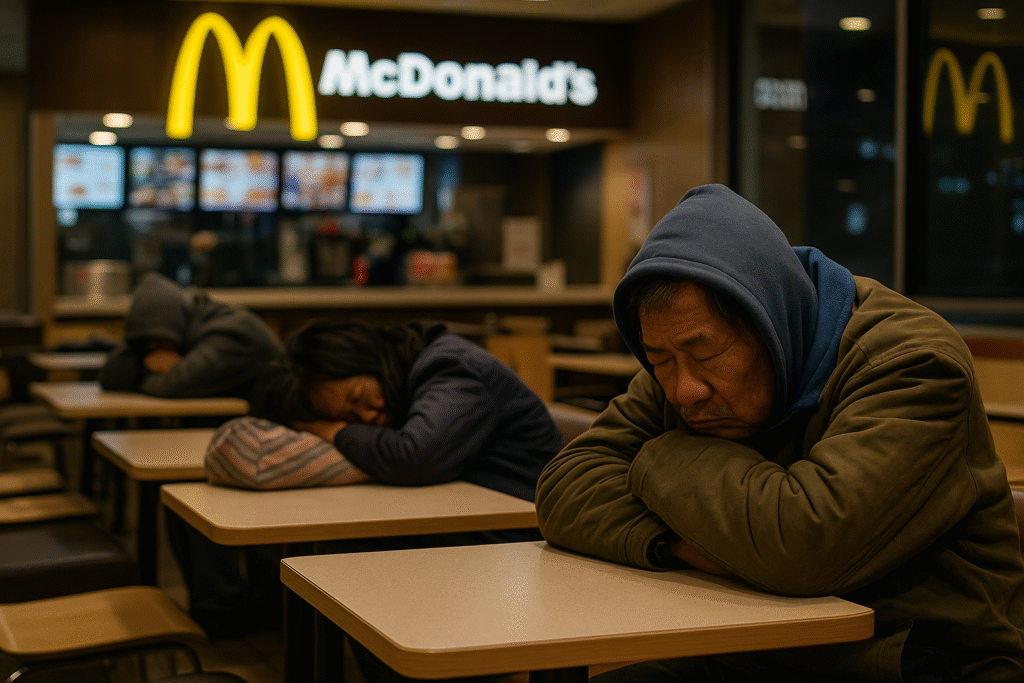Across several major cities in China, McDonald’s restaurants have become an unlikely refuge for the homeless. Open 24 hours a day and offering a clean, well-lit, and relatively safe environment, these fast-food outlets are now being quietly relied upon by those with nowhere else to go. The phenomenon has even given rise to a nickname: the “McRefugee” or “McNap.”

Typically during the late-night hours, patrons will notice individuals slumped over tables, sleeping with heads resting on trays or bags. While some may order a single coffee to justify their stay, others take refuge without making a purchase at all. The management often looks the other way, balancing corporate image with local compassion. In some areas, the influx has sparked debate over responsibility—should local authorities intervene, or should the company provide more targeted support?
Many of these individuals are not chronically homeless in the traditional sense. Some are migrant workers between jobs, others are elderly with meager pensions, and a few are simply unable to afford rent in the cities where they try to survive. McDonald’s, in contrast to other venues, offers a climate-controlled, semi-private space without the threats found on the streets or in overcrowded shelters.
The sight is jarring to tourists and locals alike: under the fluorescent lights and bright advertisements for Big Macs and Happy Meals, men and women seek rest, warmth, and a moment of peace. It’s a stark juxtaposition that highlights the growing issue of urban poverty in China, particularly among the so-called “invisible population.”
For now, McDonald’s continues to serve as a kind of unspoken sanctuary—a fast-food chain doubling as a safety net. And as long as economic pressures persist, the McNap may remain a last resort for those with no place else to go.
